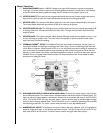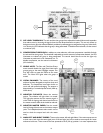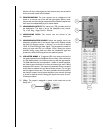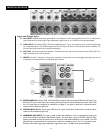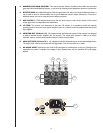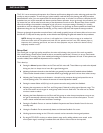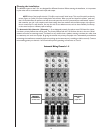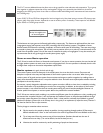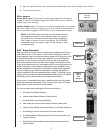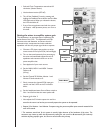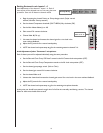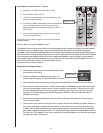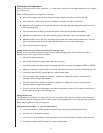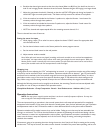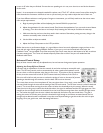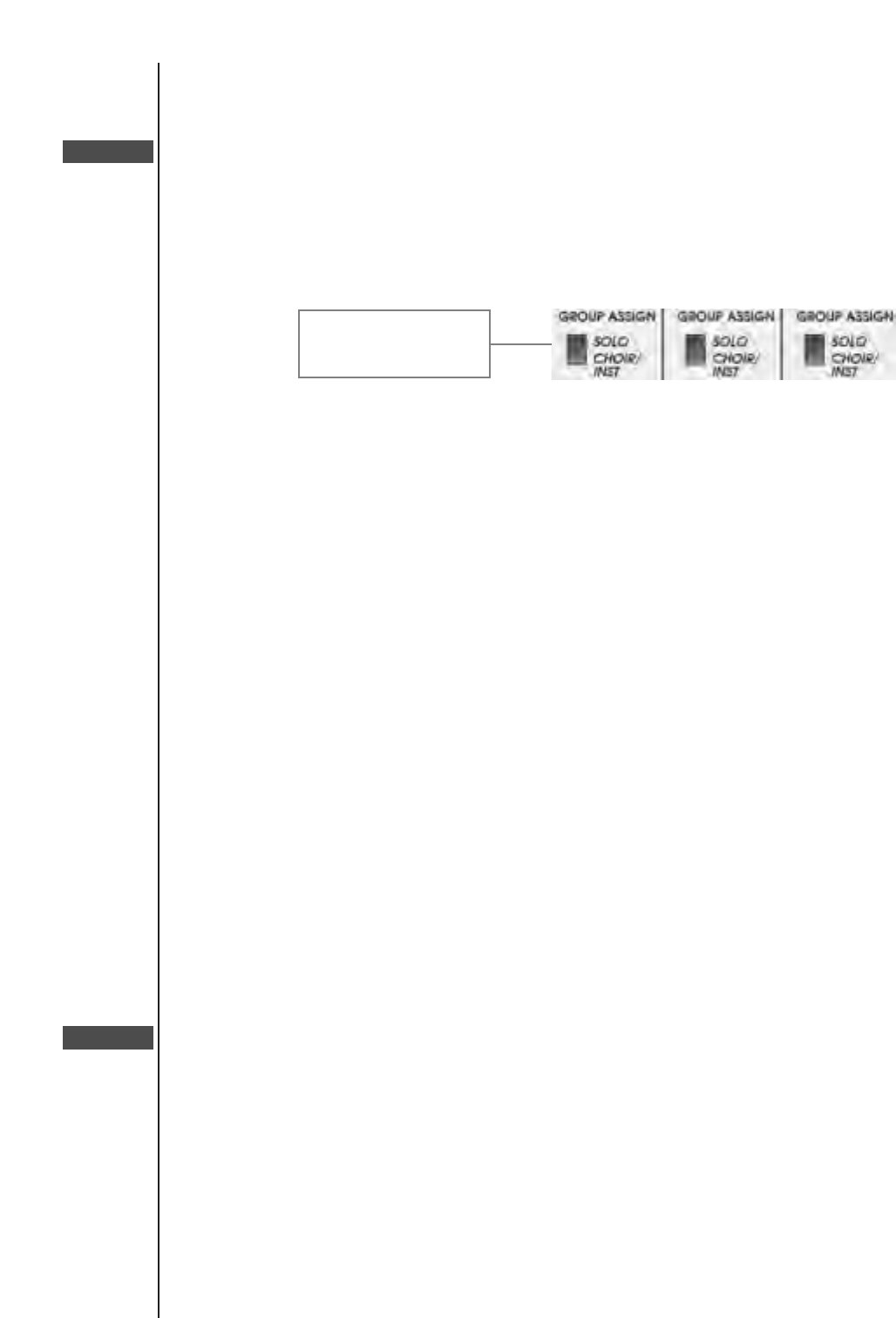
16
The S-24
™
has two additional buses that allow mics to be grouped for noise reduction and compression. Try to group
mics together on adjacent inputs that will be used together. Singing mics, particularly hand held mics, should be
assigned to the SOLO group since it has a filter to reduce rumble and handling noise. Instruments are best routed to
the CHOIR group.
Inputs 19/20, 21/22 and 23/24 are designed for line-level signals only. Use these inputs to connect CD players, tape
players, audio from video sources, keyboards or even an auxiliary mixer if necessary. These inputs are not affected
by the SOLO or CHOIR group controls.
IMPORTANT ➧
GROUP ASSIGN:
Group mics together that
will be used together
The Ambience mic input goes to the Record and Auxiliary outputs only. This feature can add sound from the room
(congregation singing and response) to the REC (recording) and AUX (auxiliary) outputs. The addition of some
ambient sound can enhance the recording, broadcast, or sound to other parts of the building. There are many things
to consider in placing this microphone. You will likely want to position the mic so it picks up a minimal amount of the
sound from the speaker system. You will also want to maximize the pickup of congregation. It may also need to pick
up instruments that do not go through the sound system (piano‚ organ)
Stereo or mono Master operation
The S-24 can be used with Stereo or Monaural sound systems. If you plan on stereo operation, be sure that the left
and right speaker systems can each cover the entire congregation area. If mono operation is selected, then the Left
and Right main outputs can be used as independent output sends.
Monitor systems: the good, the bad, and the ugly
The monitor system can be the best part of the sound system, but it can also be the worst. Great care and
discipline is required in the setup and adjustment of the monitor system so that it is an asset. What does a good
monitor system do? A good monitor system allows musicians and singers to perform together by enabling them to
clearly hear themselves and/or others. It may also enable the choir and other service participants to better hear and
participate in the worship service.
By contrast, a poorly designed or adjusted monitor system can make it difficult to hear what is needed by including
too much information or by emphasizing too much of the wrong thing. In addition, as the volume of the monitor
system increases, it can overwhelm the main sound system making the overall sound unintelligible. Because it is
another parallel sound system, a monitor system adds to the potential for acoustic feedback.
The S-24 has two monitor sends, enabling it to provide two different mixes for the platform or choir, providing only
the material that is needed. Monitor 1 also incorporates the Feedback Ferret
®
to help eliminate feedback through
the monitor system. Because of this feature, Monitor Send 1 is best used for overhead choir foldback or general
platform fill speakers. (Please refer to the Glossary later in this guide for an explanation of unfamiliar terms.) Monitor 2
can then be used for floor or spot monitors.
The key things to remember about monitors:
➧ Get the sound to the people as directly as possible. (running everything through speakers 30 feet away is
difficult and adds more “noise” to the room but this can work for applications like voice foldback to the choir)
➧ Try to keep sound from the monitors out of the microphones. Speakers directed into the rear of
directional mics can help. (This can be difficult, but do the best you can.)
➧ Minimize the need for monitors by careful positioning of people and instruments.
IMPORTANT ➧




